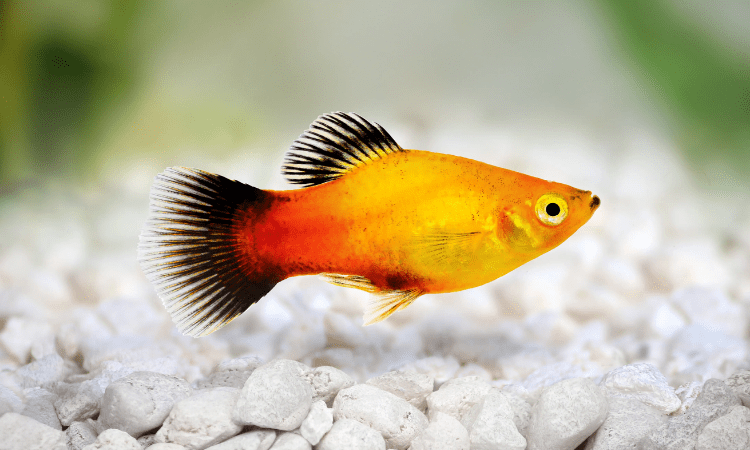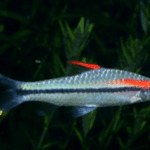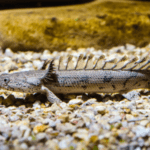Among the easiest egg-laying fish to spawn in home aquaria, lively platies entice aquarists with brilliant colors and energetic reproduction rituals. However, encouraging prolific production requires following specific breeding strategies for these active livebearers.
Select Quality Parental Pairs
Start with vibrantly colored, ideally sized partners showing no physical deformities.
Males
Choose adult males boasting signature gonopodium anal fins and larger overall statures nearly twice female sizes platies exhibit. Brilliant red mickey mouse and blue variegated males make excellent picks.
Females
Pick full grown females displaying prominently darkened gravid spots behind their abdomens when viewed overhead. This signals fertility reaching peak reproductive maturity. Prior birthing experience proves best.
Facilitate Spawning Behaviors
Proper husbandry facilitates instincts driving birthing rates.
Grouped Shoals
Platies maintained in gender ratio groups averaging 2-3 females per male kept in larger 30+ gallon setups commence prolific near continual breeding provided suitable conditions get met consistently.
Live Plants
Furnish tanks heavily using leafy stem bunches allowing broken sightlines and shaded overhead areas sought during mating pursuits and eventual births selected instinctively for fry safety once arriving.
Frequent Partial Water Changes
Help concentrate customized infusoria growth and natural hormones through 20% water changes twice weekly. This also controls ammonia from frequent spat activity described commonly hindering delicate labyrinth organ development in offspring produced by overactive parents. Monitor individuals always for signs of exhaustion mandating rest periods implemented to ensure long term health.
Prepare Dedicated Fry and Grow Out Systems
Preparing safe housing options prevents losing vulnerable offspring.
Isolation Net Breeders
Incorporate floating mesh breeder boxes or hanging nursery nets allowing newborns immediate separation yet continued proximity to mothers avoiding abandonment issues or prolific parents simply consuming cumulative spawn outright.
Established Grow Out Tanks
Eventually transfer maturing fry reaching quarter inch lengths into established uncrowded small volume grow out aquariums using conditioned cycled media allowing head starts reaching adulthood sizes faster through nutritious feeding.
Conclusion
Achieving optimum platy production relies on selecting vibrant specimens demonstrating characteristic traits then facilitating natural courtship instincts through crowded maintenance and habitat enrichments lowering territorial triggers. Protect fragile offspring through immediate segregation into protective netting then transfer developing juveniles into optimized rearing aquariums focused on accelerated growth until ultimately reaching successive breeding sizes again continuing proliferation efforts through generations being rewarded by delightful colors sustaining genetic legacies.
FAQs About Breeding Platies Successfully
1. What water temperature do platies breed in?
Ideally maintain warm water ranging 78-82°F to encourage peak platy breeding activity through faster metabolism and overall enhanced hormonal responses driving regular courtship rituals among properly sex grouped colonies given ample aquatic plant cover provided.
2. How long after giving birth can platy breed again?
Allow approximately 3-4 weeks recovery periods for female platies having recently undergone birthing cycles before reintroducing towards males again for mating avoidance exhaustion endangering long term wellness affected by overly strenuous consecutive spawnings long term.
3. Can you breed siblings platies together?
Closely related brother-sister pairings may generate slightly higher abnormality rates however generally pose minimal adverse risks for hobbyists compared to strict professional genetic programs. Simply avoid repeated successive inbreeding focusing same pairs together if physical deformations become apparent in subsequent generations produced through isolation.





